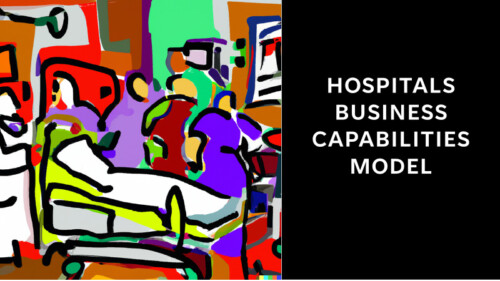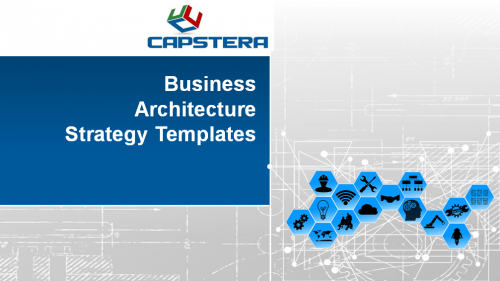Retail Banking Business Capabilities Map
Price range: U.S. $999 through U.S. $2,999
Capstera’s Retail Banking Business Capabilities Map encapsulates what a bank does, decomposed as a set of multilevel and granular business capabilities. The Retail Banking business capability map is a must-have tool for business architects, enterprise architects, business executives, technology leaders, and project teams to fathom the nuances of the core, context, and commodity capabilities. A prioritized list of banking capabilities will help drive technology enablement and enterprise transformation. The Retail Banking Business Capability Map will function as an essential blueprint with a structurally sound and internally coherent list of business capabilities spanning all aspects of core retail banking. The retail business capabilities map comprises 330 capabilities across three levels.
What are the deliverables and format of the Retail Banking Business Capabilities Map?
The Retail Banking business capabilities model includes the following formats:
- An Excel spreadsheet with list capabilities using the Excel grouping feature.
- A PowerPoint format with the top two levels presented in a nested visualization.
- A Word document with capabilities in a multilevel list format.
- Retail banking capability KPIs (level 2)
- Retail banking capability definitions (level 3)
- Banking Transformation Guide
- Plus, bonus deliverables
(Note: As the Retail Banking Business capabilities map is a digital deliverable, we do not accept returns or issue refunds. So, please read the product description and the terms carefully.)
Watch a Retail Bank Capabilities Map Intro Video
Banking at a Crossroads: The Strategic Imperative for Transformation
The banking industry is transforming significantly due to changing customer expectations, technological advancements, and regulatory requirements. One of the critical reasons why banks must transform is the shift in customer behavior, which is driven by digital transformation. Customers increasingly seek convenient and personalized banking services that can be accessed anytime and anywhere. To meet these expectations, banks must adopt a digital-first approach that leverages technology to offer innovative services and seamless customer experiences.
Another reason banks must transform is the emergence of disruptive technologies such as blockchain, artificial intelligence, and machine learning. These technologies have the potential to significantly improve banking operations, drive efficiency, reduce costs, and enhance customer experiences. Banks that fail to adopt these technologies risk being left behind by competitors and losing market share. Additionally, regulatory requirements are becoming increasingly stringent, and banks must comply with these requirements to avoid reputational and financial risks.
The need to keep up with changing customer expectations, technological advancements, and regulatory requirements makes it imperative for banks to transform their operations and adopt a digital-first approach.
Business Capabilities as a Foundation for Banking Transformation
For a bank to transform successfully, it is essential to establish a structurally strong foundation to support change and innovation over time. This is where business architecture and business capabilities come into play. Business architecture creates a structured model of a bank’s business, including its operations, capabilities, and systems. This model can help banks to understand how their business operates, identify inefficiencies, and develop a plan to optimize and streamline operations. In addition, by creating a clear picture of their business architecture, banks can better understand how different business units and functions interact and how changes in one business area can impact others.
Business capabilities are the specific skills and resources a bank needs to execute its business strategy successfully. They encompass everything from people and processes to technology and data. By defining and organizing their business capabilities, banks can identify gaps and redundancies and develop a roadmap to address them. This helps ensure that the bank has the necessary resources to execute its strategy and drive innovation over time.
Together, business architecture and business capabilities provide banks with a framework to assess and optimize their operations, reduce costs, and drive innovation. By taking a structured approach to transformation, banks can build a foundation capable of supporting ongoing change and adaptation and position themselves for success in a rapidly evolving industry.
What is the Value of the Retail Banking Business Capabilities Map?
A business capabilities map is a fundamental and foundational entity in the business architecture continuum. The Capstera retail banking capabilities model encapsulates the essence of the retail banking functions with a detailed, multilevel capabilities list. The retail banking capabilities list is integral to retail banking business architecture. Along with value streams, a banking data model and an applications/systems inventory will allow for valuable views and viewpoints. (Important: The current product and its deliverables are limited to business capabilities. All other business architecture artifacts are outside the scope of the existing product.)
There are several benefits from business capabilities, including, among others:
- Foster alignment between business and IT using capabilities as an everyday language.
- Capabilities are structurally sound and internally coherent abstractions of business functions.
- A capability-based roadmap eliminates redundancy and replication and focuses on capability evolution.
- Juxtaposing capabilities and systems/applications provide a footprint analysis and can lead to better application portfolio rationalization decisions.
Created by business architects and retail banking domain experts, the retail banking capabilities list is detailed, in-depth, and conforms to the construct of MECE (mutually exclusive and collectively exhaustive).
NOTE: Digital, Insurance, Wealth Management, Asset Management, and Alternative Investments are standalone and separate capability models. Even if acknowledged in the core banking capabilities map, the details are captured in the respective capability maps, which are independent and standalone.
Similarly, all the Shared Services such as Human Capital Management, Finance and Accounting, Procurement, Supply Chain Management, Marketing, and Business Intelligence are addressed peripherally as a part of the flow. However, if you focus on transforming a single function, the additional depth, breadth, and scope of standalone capability maps will be valuable.
Provisos:
- We cannot accept refunds or returns as the products are digital deliverables.
- Please realize that a generic capability model may or may not be fully applicable in some circumstances.
- We do not offer any implied or explicit warranties, and it is sold on an as-is basis.
- The sale does not include customization or implementation help.
- Please review our standard Ecommerce Store Terms and Conditions.
Need Customization Help?
Retail Banking Business Capabilities Map
Price range: U.S. $999 through U.S. $2,999





